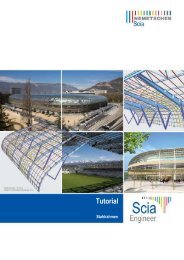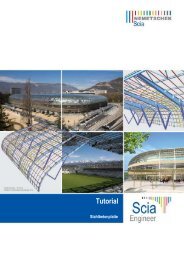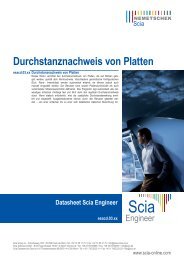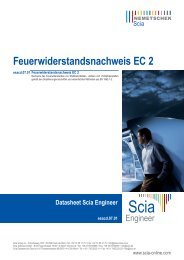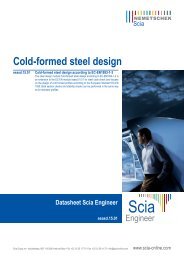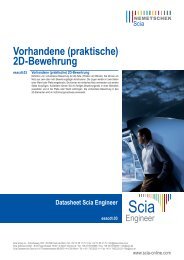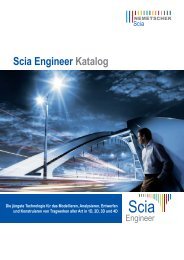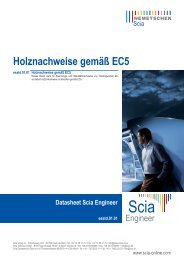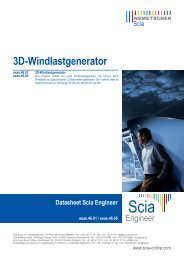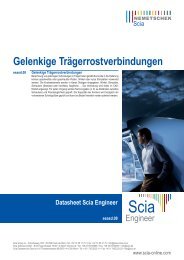Advanced Package Training Scaffolding 2011.1 - Scia-Software GbR
Advanced Package Training Scaffolding 2011.1 - Scia-Software GbR
Advanced Package Training Scaffolding 2011.1 - Scia-Software GbR
You also want an ePaper? Increase the reach of your titles
YUMPU automatically turns print PDFs into web optimized ePapers that Google loves.
q2: Partial area load (EN12811-1, 6.2.2.4)<br />
13<br />
<strong>Scaffolding</strong><br />
This load has to be applied only for classes 4, 5 and 6. In those cases each platform is capable of<br />
supporting a partial area loading q2 on an area Aq2:<br />
= ∙ ∙ <br />
With:<br />
l The length<br />
w The width<br />
ap<br />
Coefficient of Table 3<br />
The dimensions and position of the partial area are chosen to give the most unfavourable effect. One<br />
example is shown below:<br />
Wind load<br />
Following 6.2.7.4 of EN12811-1, two wind loads have to be calculated: the maximum wind load and the<br />
working wind load.<br />
Maximal wind load<br />
When the European Standard for wind loads is available it is used for the calculation of the maximal<br />
wind load.<br />
To make allowance for equipment or materials which are on the working area, a nominal reference<br />
area is assumed at its level over its full length. This area is 200mm and includes the height of the<br />
toeboard. (En 12811-1, 6.2.7.4.1)<br />
Note: For the purposes of structural design of façade scaffolds made of prefabricated components,<br />
design velocity pressures are given in EN 12810-1, 8.3.



